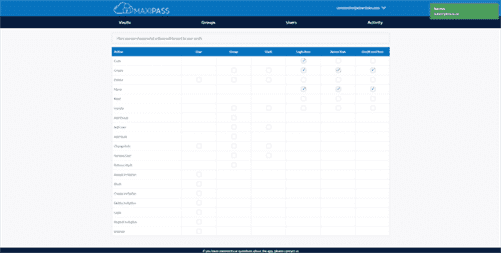Customer service remains one of the most popular applications for AI tools in non-AI companies. Conversational technologies like voice assistants and chatbots to manage customer interactions bring immediate value to companies and provide data to help streamline otherwise time-constraining processes. When interpreted by AI and ML technologies, big data sets can help identify patterns and insights into client behavior.

However with the increasing demand for analytics and increasing protection of personal data, demand for anonymized data has increased. A significant share of company data is locked up in semi-structured documents such as invoices, receipts, order forms etc. Deep learning based data extraction solutions enable companies to extract entities from their semi-structured data and use them to understand their business in more detail.
Contact Center Experience
Tableau Pulse is also another feature to be included and launched across Tableau Desktop products. With over 245 million customers, the organization collects over 2.5 petabytes of unstructured data every hour, which is not very easy to analyze. It integrates AI systems that can help the organization make self-governing decisions. An untouched aspect of bringing Artificial Intelligence and data analytics into organizations is that it will usher a cultural shift in the workplace.
These functions work by automating some processes in Power Query, which is built into your Power BI Desktop app. Therefore automating analytics tasks has significant potential value for firms. The war for AI talent is well documented and impacts the cost and availability of analytics talent. Data scientist who compromise a significant share of modern analytics work force are also part of the AI workforce. In that regard, in this article, we plan to explain how exactly AI is transforming how analytics is done.
Three key details we like from How 11 CIOs are Using Machine Learning to Boost Innovation:
Augmented analytics is when AI is used to automate parts of the analytics process that would be performed by a data scientist or a data science team. These include tasks around data preparation and getting insights out of datasets. Basically, this type of analytics uses AI to make the human side of data analysis easier.

GitHub Copilot is an AI-powered coding assistant designed to help software developers write more efficiently. It integrates with various code editors and provides real-time code suggestions, autocompletion, and documentation as developers write their code. OpenAI’s Codex model powers GitHub Copilot and aims to make the coding process faster and more productive. Bard is a sophisticated tool that excels in data exploration and storytelling within data science. It stands as a recent addition to the landscape of data science tools, offering an innovative approach to processing and transferring knowledge from large datasets. Bard is designed to assist data professionals in enhancing data exploration and simplifying the storytelling process with data.
Industries Leveraging AI in Data Analytics
Generative AI can assist in this process, automating the generation of basic insights and summaries so the numbers and graphs actually have a meaning—also for those not as data savvy. Beyond just the current data, understanding trends often requires historical or comparative context. A dashboard filled with graphs, pie charts and scatter plots can be daunting. While a seasoned analyst might see a trend or anomaly, for many others, it remains just a collection of numbers and lines. While many of us frequently take the internet and communications for granted, the telecommunications industry depends on several complicated processes and continual changes.
Data Analytics is the science of analysing raw data to make conclusions about that information. Many data analytics techniques and processes have been automated into mechanical methods and algorithms that work over raw data for human consumption. So, when we think about the economy, now into the digital era, implementation of ai in business its increasingly technically and culturally driven by data. It’s now about taking your organization to the next level of adopting a data-driven culture. That is what these leading companies are doing, and it’s not just reducing time to action, but they are actually using algorithms to optimize outcomes.
Advertising & Marketing
This article should not be deemed or construed to be for the purpose of soliciting business for any of the companies mentioned, nor does Deloitte advocate or endorse the services or products provided by these companies. In terms of their value to AI, not all data entities and data sets are created equal. Although enterprises vary so significantly that custom AI solutions are necessary, developing those tools in-house isn’t always a realistic proposition for many organizations. Instead, it’s best to use third-party AI tools, which are readily available from numerous vendors.

Artificial intelligence is also capable of unifying data across different sources, even hard-to-track ones like call data. And it requires human professionals to provide it with data, information, and guidance to do its job. To help give you a bigger picture of the fast-moving space of AI in data analytics, I’ve answered some common questions you may have. This means you need to be mindful of the potential for misuse or abuse when using AI in your data analytics workflow.
Establish a baseline understanding
Another great option for data analysts is Polymer, which is a robust AI tool that offers a powerful AI to transform data into a streamlined, flexible, and powerful database. Similar to other great AI tools, one of the best aspects of Polymer is that it doesn’t require any coding. Conversation analytics can help energy and utilities companies enhance customer experience and remain compliant to industry regulations.
Health Data Analytics Institute (HDAI) Announces $31 Million … – Healthcare IT Today
Health Data Analytics Institute (HDAI) Announces $31 Million ….
Posted: Tue, 17 Oct 2023 13:06:53 GMT [source]
AI can use those insights and patterns to make predictions about what drives outcomes. Austin is a data science and tech writer with years of experience both as a data scientist and a data analyst in healthcare. Starting his tech journey with only a background in biological sciences, he now helps others make the same transition through his tech blog AnyInstructor.com. His passion for technology has led him to writing for dozens of SaaS companies, inspiring others and sharing his experiences. I hope this article has provided you with a better understanding of how AI can be used in data analytics and which tools are available.
Real-time Data Processing
Qlik Sense also offers guided data exploration, allowing you to quickly explore your data and uncover patterns without writing any code. If you’re currently learning or using Python in your projects or work, you’re also probably familiar with Jupyter Notebooks. Well, you’re in luck because Jupyter has also launched an AI-powered extension called Jupyter AI. The Analyze Data in Excel feature is great for Excel users who want to quickly and easily gain insights from their data. They’ve also launched an AI-powered feature called AI Insights for their Power BI Desktop tool, which is now available in all Power BI Desktop applications. It’s also good for data analysts who want some support in data governance and improved data visibility.
- “To successfully implement AI, it’s critical to learn what others are doing inside and outside your industry to spark interest and inspire action,” Wand explained.
- There are hundreds of AI analytics tools out there—here are some of the best ones worth a look.
- It includes carefully reviewing training data to prevent the reinforcement of social prejudices, openly disclosing the AI decision-making process, and holding companies accountable for any unforeseen repercussions.
- ChatGPT, Bard, Copilot, Code Interpreter, and the OpenAI Playground are pivotal tools in this landscape, each with strengths and limitations.

